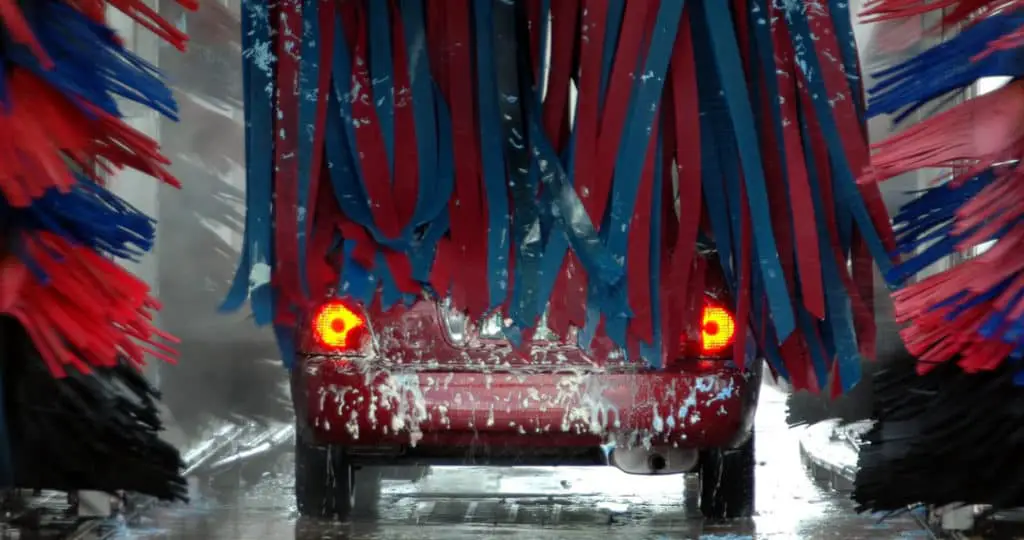- How to Clean Car Carpets Quickly (Without An Extractor) - July 10, 2024
- Can You Touch Up Clear Coat On A Car? Yes and No (Here’s Why) - November 25, 2023
- How To Wax A Car By Hand (For Beginners) - November 14, 2023
Last Updated on January 21, 2025 by Nate Schnell
Swirl marks on your car’s paint can be frustrating, whether they result from improper washing techniques or were inherited from a previous owner. These unsightly blemishes in the clear coat detract from your car’s appearance but can be effectively removed with the right tools, techniques, and a little patience. This guide provides a comprehensive approach to preparing for and removing swirl marks, as well as tips for preventing them in the future.
Understanding Swirl Marks
Swirl marks are fine, circular scratches that occur on a car’s clear coat. They often result from improper washing or drying techniques, automated car washes, or using abrasive cleaning products. These marks are especially noticeable on darker-colored cars, where light reflections highlight imperfections. While swirl marks don’t affect the structural integrity of your paint, they can diminish your car’s aesthetic appeal.
Preparing Your Car for Swirl Mark Removal
Preparation is crucial for effective swirl mark removal. Proper preparation ensures that no additional scratches or blemishes are introduced during the process. Start by washing your car thoroughly with a high-quality car wash soap and a soft microfiber sponge or mitt. Rinse well to remove all soap residue, as leftover soap can interfere with the next steps and even cause additional swirl marks.
Once your car is clean and dry, use a clay bar to remove contaminants embedded in the paint. A clay lubricant, such as a quick detailer, should be applied to prevent scratching. Rub the clay bar over the surface until it feels smooth, then rewash and dry the car to remove any residue.
How to Remove Swirl Marks From Your Car’s Paint
Swirl marks can be removed using several methods, ranging from machine polishing to hand buffing. Choose the technique that best suits your tools and experience level.
Using a Buffer and Polishing Compound
A dual-action polisher with a foam pad is one of the most effective tools for removing swirl marks. Apply a small amount of polishing compound to the pad and work it into the affected area using circular motions. Follow the manufacturer’s instructions regarding application time and pressure. The buffer removes a thin layer of the clear coat, leveling out imperfections and restoring a smooth surface. Always use a clean pad to avoid introducing additional scratches.
Removing Swirl Marks With a Clay Bar
A clay bar can also help remove light swirl marks by lifting embedded contaminants from the paint. After washing and drying the car, spray a clay lubricant on a small section of the surface. Glide the clay bar back and forth until the surface feels smooth. Repeat this process over the entire car, wash it again, and apply a finishing polish to restore shine.
Hand Buffing Swirl Marks
For those who prefer a manual approach, hand buffing can be effective for smaller areas. Use a clean microfiber towel or foam polishing pad with a small amount of polishing compound. Work the product into the affected area in circular motions, applying even pressure. Take your time and avoid rushing, as excessive force can cause additional scratches. Once the swirl marks are removed, buff the area with a clean towel and finish with a polish or wax.
Preventing Swirl Marks
Preventing swirl marks requires consistent care and attention to your car’s washing and maintenance routines. The following tips will help keep your paint in pristine condition:
- Wash With Proper Techniques: Use the two-bucket method to separate soapy water from rinse water, ensuring dirt and debris are not reintroduced to the surface. Always use a clean, soft microfiber mitt or sponge.
- Avoid Automated Car Washes: Automated car washes often use abrasive brushes that can scratch your paint. Opt for hand washing or touchless car washes to minimize the risk of swirl marks.
- Use the Right Drying Tools: After washing, dry your car with a clean, soft microfiber towel or air blower. Avoid letting it air dry, as water spots can form and become difficult to remove without causing scratches.
- Choose High-Quality Products: Invest in car shampoos, waxes, and polishes that are pH-balanced and safe for your car’s paint. Avoid abrasive compounds that can damage the clear coat.
- Apply Protective Coatings: Consider using ceramic coatings or paint sealants. These products create a protective layer over your car’s paint, reducing the likelihood of swirl marks and making the surface easier to maintain.
Tools for Paint Correction
To achieve the best results, having the right tools is essential. A dual-action polisher is ideal for safely removing imperfections without damaging the paint. Pair it with a high-quality polishing compound specifically designed to remove swirl marks. For more detailed work, clay bars and microfiber towels are invaluable for lifting contaminants and achieving a smooth finish.
Frequently Asked Questions
What causes swirl marks on car paint?
Swirl marks are often caused by improper washing or drying techniques, such as using dirty or abrasive materials. Automated car washes and environmental contaminants can also contribute.
Can swirl marks be removed from black cars?
Yes, black cars are more likely to show swirl marks due to their reflective surfaces, but they can be removed using the same polishing techniques described above.
Does ceramic coating prevent swirl marks?
Ceramic coating creates a protective barrier over the clear coat, reducing the risk of swirl marks and making the paint easier to maintain.
Is it better to use a machine polisher or hand buffing?
A machine polisher is generally faster and more effective for large areas, while hand buffing is suitable for small, isolated spots.
Maintaining a Swirl-Free Finish
To maintain your car’s flawless finish, wash and dry it regularly using the proper tools and techniques. Avoid shortcuts like automated car washes that can introduce scratches, and always store your car in a covered area to protect it from environmental elements. Reapply wax or sealants as needed to enhance protection and keep your paint shining.
By following these steps and tips, you can restore your car’s paint to its original glory and keep it looking pristine for years to come.



